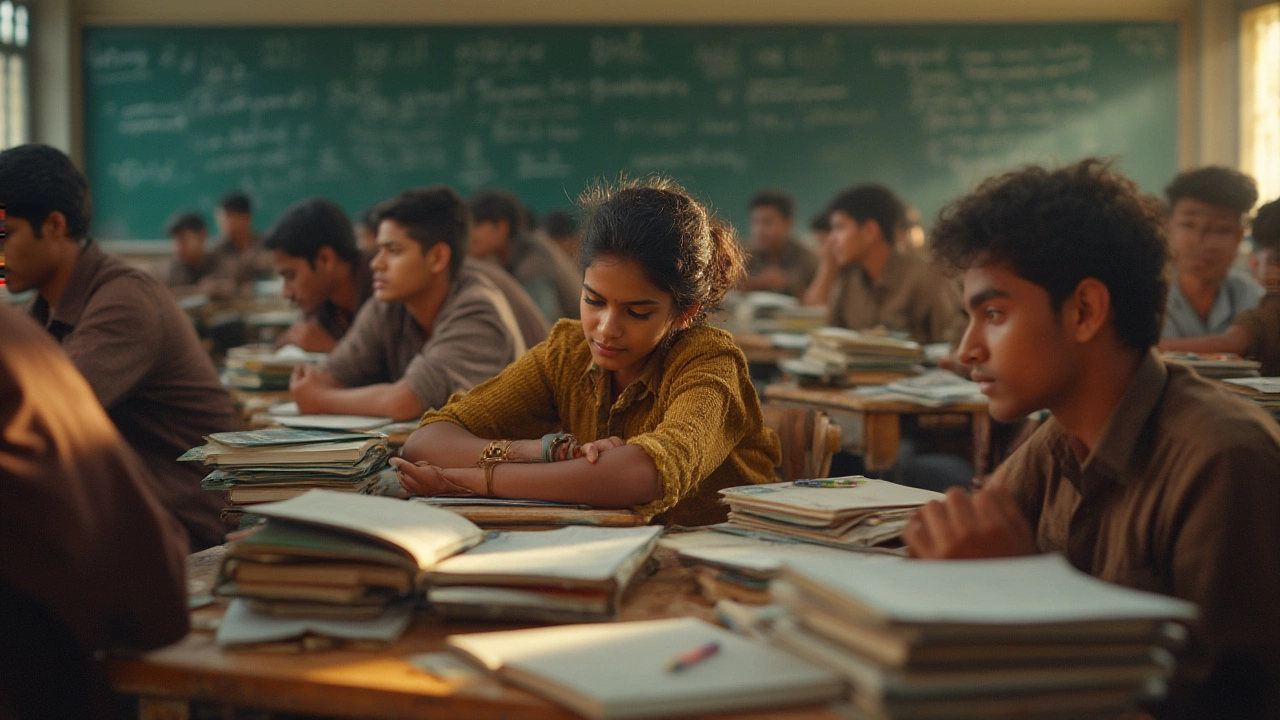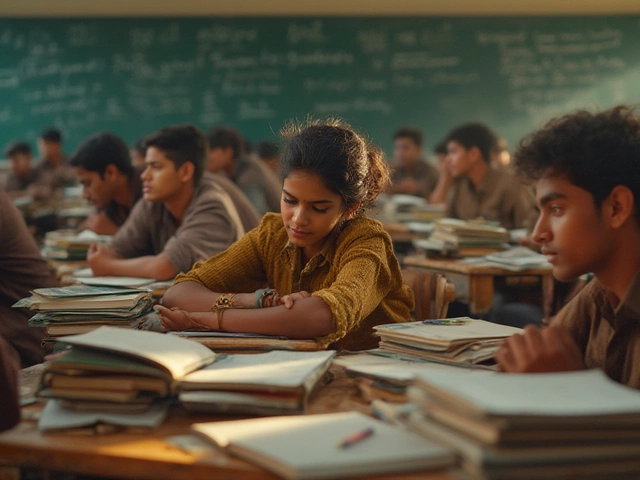“The 2016 paper felt like a mental marathon.” That’s how one topper summed up the JEE Advanced experience. But dig a little deeper and you’ll see: every year, there’s a new debate. Was 2018’s paper the harshest ever? Did 2015 blindside everyone? For lakhs of students, this isn’t just trivia—it’s survival. If you’ve ever wanted to know which JEE Advanced paper was truly the toughest, and why some years still haunt even rank 1 holders, buckle up. The story behind these legendary test papers is more surprising than you might expect.
The Meaning of 'Toughest': What Makes a JEE Advanced Paper Brutal?
When people say “That year’s paper was insane,” what are they really talking about? It’s not just about super-hard questions. There’s a weird cocktail of factors: length, unpredictability, mind-bending new question types, and the little psychological tricks that even the coaching bigwigs struggle with. JEE Advanced is unique because the pattern changes just enough each year to keep students on their toes.
Some papers have impossible math sections, others slip in ambiguous multiple-correct questions and leave even teachers scratching their heads. Then there’s the marking scheme—it isn’t always standard. Sometimes they sprinkle negative marks on seemingly easy questions, forcing students to play defense instead of attack. And let’s not forget time: when questions are conceptual and calculations go three layers deep, speed becomes just as critical as smarts.
Take 2015, for example. Physics had questions that blurred boundaries between topics. In 2016, the level of innovation in the problems—the sheer creativity—meant you couldn’t just memorize formulas or routine methods. 2018 was notorious for being ultra-difficult in math, while some said 2024’s paper was unpredictable, with curveballs in organic chemistry. Dozens of surveys from coaching giants like FIITJEE and Allen every year quiz toppers about the ‘monster years.’ Their answers are surprisingly varied—no year is unanimously chosen.
So “toughest” isn’t about the lowest cut-off or the highest fail rate. It’s about the feeling of staring at the clock, sweating bullets, because everything you planned is up in the air. And for a lot of students, that feeling is more hardcore than any statistic.
Year-by-Year: How JEE Advanced Papers Changed the Game
To understand which year took students to the edge, you need to track the paper’s evolution. Back when it was IIT-JEE (before the rebranding), the focus was largely on theory and familiarity. But since 2013, “JEE Advanced” started testing application, logic, and the sort of problem-solving even Olympiad toppers find scary. Here’s how the years have stacked up:
| Year | Difficulty (Unofficial) | Notorious Section | Notable Features |
|---|---|---|---|
| 2015 | Very High | Physics | Multi-correct, tough numericals |
| 2016 | Highest (per coaching polls) | Math | Logical reasoning, tricky pattern |
| 2018 | Legendary | Math | Unprecedented question styles |
| 2022 | High | Chemistry | Unexpected organic focus |
| 2024 | Mixed | Organic Chemistry | Unpredictable trends |
Students remember 2018 as the ‘mathemagician’s’ paper. Not just because questions were challenging, but because they’d never seen anything like them. Plenty of otherwise reliable test takers walked out, stunned that none of their coaching drills matched what was on display. In 2016, math felt less like high school and more like a marathon maze. Many struggled to even attempt all the questions, with new matrix-match types confusing even AIR 1s.
What’s interesting is how top coaching institutes react. That year, Allen and Resonance gave the 2016 paper one of their highest-ever difficulty ratings. Vidyamandir summed it up: “The overall complexity, coupled with never-before-seen question structure, spooked almost everyone.” And let’s not forget 2015—Physics, packed with deceptive options, left many top-500 hopefuls in crisis mode. The cut-off that year plummeted. If you compare, the average score for a top 100 rank in 2016 dropped almost 12% compared to the previous year.
Year by year, the most brutal years have a few things in common: surprising section weights, questions with zero precedent, and a pattern that exposes anyone who practiced ‘by rote.’ If you want a real challenge, ask anyone who actually took the exam in those years. The stories all sound different, but you’ll start to notice the same sense of shock—and weird pride in surviving.

Inside the Papers: Dissecting the Hardest Questions
If you’re curious about what makes certain JEE Advanced questions infamous, let’s peek inside a few. In 2018’s second paper, math question 7—a strange, multi-layered matrix match involving infinite sequences and convergence—had even faculty members sweating. The confusion came not just from the concept but from the format: no similar examples in that year’s coaching industry test series. It became a running joke among rankers that ‘you can train for years, but Paper 2 of 2018 will still find a way to mess with you.’
Physics isn’t off the hook, either. In 2015, one numerical-based question demanded knowledge of both mechanics and optics, followed by an unexpected twist in units. It was like combining two subjects into one, just to see who’d notice. Definitely not the kind of problem you’d spot in a last-minute revision booklet.
And chemistry? The 2022 paper’s organic section is legendary for flipping the script. A question weaving through three different reaction mechanisms tripped up even the students who’d memorized every reaction in the book. Why? It wasn’t about memory. It was logic—spotting the exceptions with almost no clues. For once, mugging up wasn’t enough.
The thing that scares even teachers is unpredictability. Every year, test-setters mix in ‘curveball’ questions—either fiendishly hard, or so easy they make you second-guess. Students walk in thinking, “I’m ready for this level.” The exam says, “Guess again!”
If you want to see for yourself, grab past year tough papers from the JEE Advanced official archive. Try solving a couple from 2016 or 2018 with a timer. You might come away feeling humbled—and maybe a little grateful you never sat for that particular year.
Why No Single Year Reigns Supreme—And How That Helps You
Everyone loves arguing about which paper was the roughest, but the truth is: it depends who you ask. Some believe 2016 was brutal because of the mind games in math. Others point to 2018—a year math toppled even Physics whizzes. And plenty feel the pain of those rare chemistry-heavy years that upended the old balance.
For every student who found a certain year “unfairly difficult,” there’s another who called it manageable—they’d simply prepped a bit differently, or gotten lucky with their strengths. That’s the curious thing about JEE Advanced: there’s no guarantee. What terrifies one crowd might feel ‘routine tough’ to another. Even data supports this: post-exam polls from 2015 to 2024 reveal that no year gets over 60% agreement as the ‘hardest.’ Surprised? Turns out pressure, nerves, and even the tricky seat-allocation system all play a role in how the paper hits you.
Maybe that’s the point. JEE Advanced is designed to be unpredictable, to reward out-of-the-box thinking, and to test whether students are comfortable in chaos. So, is there one “toughest” year? Maybe not absolutely. But here’s the twist: that’s actually good news. It means there’s no set pattern to memorize, no magic formula. The best-prepared candidates are those who stay flexible, adapt to surprises, and keep calm. They’re the ones who thrive, no matter how strange the paper gets.
Want to tilt the odds? Focus on concepts, not just past patterns. Work on timing, creativity, and handling surprises. Mock yourself on test days that feel ‘off,’ rather than just the perfect ones. If you get blindsided by a new question style, you’ll be ready.

Winning the Mind Game: Tips from the People Who Conquered the Paper
Toppers from those famously thorny years have some consistent advice. First, stop looking for ‘the pattern’ or expecting last year’s tricks. As Anushka Singh (AIR 12 in 2018) put it, “JEE Advanced is a test of how you handle the unknown. Every time I thought I’d predict what was coming, the paper would fool me.”
Here are some takeaways and strategies from veterans:
- Practice real unpredictability. Try solving unseen problems, not just recycled mocks. Test yourself on odd mixtures of topics. That’s how IIT-setters think.
- Focus on concepts, not formulas. The toughest years hit rote-learners hardest.
- Don’t panic if a section looks alien. Many toppers chose to skip, regroup, and return later. It’s often about maximizing what you do know.
- Simulate tough environments: bad lighting, noise, or, say, zero warm-up time. Get comfortable being uncomfortable.
- After the test, don’t obsess over cutoff predictions. Historical cut-offs swing wildly in tough years. Keep your calm and wait for official data.
And some stats might help ground things. Even in the ‘killer’ 2018 paper, almost 25% of top-100 rankers reported scoring less than 45% of total marks, according to an Allen survey. Nearly 60% said they abandoned at least one complete section. That’s normal in a year where everyone is struggling.
The bottom line? JEE Advanced isn’t about beating the “monster paper.” It’s about outlasting everyone else in the same tricky boat. If you keep your nerve—and prep for true surprises—you stand a real chance. Yes, some years are nightmares. But the right mindset might just turn a horror story into your proudest victory.






